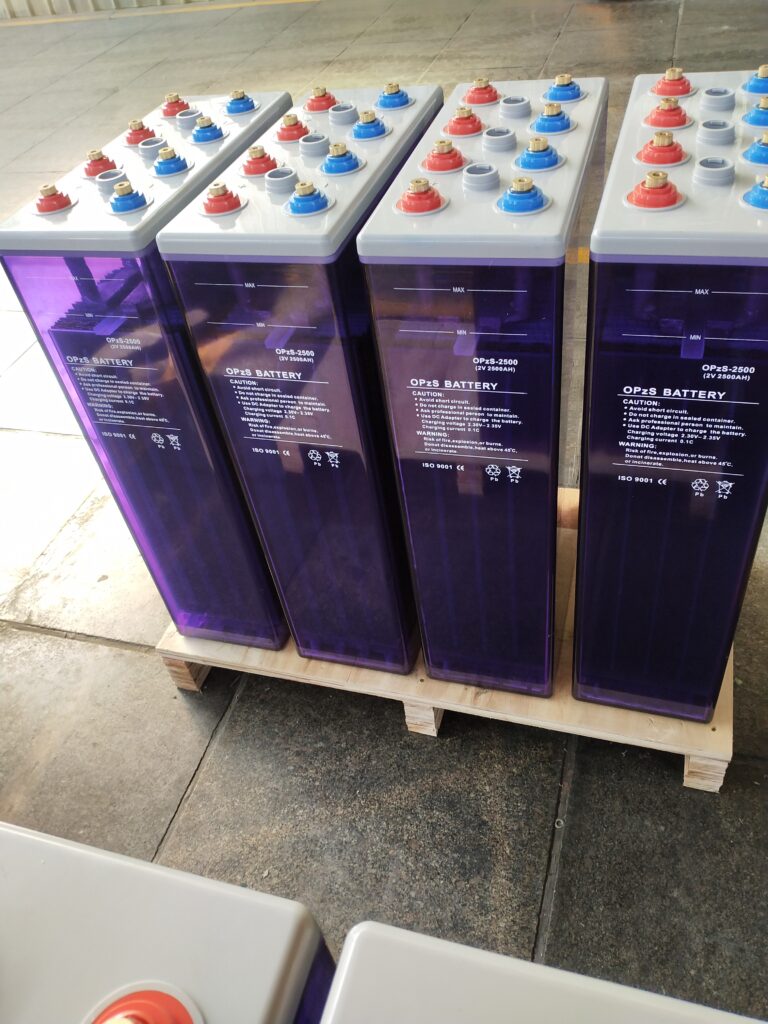OPzS batteries, like other lead-acid batteries, can exhibit several abnormal reactions or issues that indicate potential problems. It’s important to identify and address these issues promptly to prevent damage to the battery and ensure safety.
1. Overheating
- Symptoms: Battery temperature rises excessively during charging or discharging.
- Causes: Overcharging, high ambient temperature, internal short circuits, or excessive discharge rates.
- Consequences: Reduced battery life, thermal runaway, potential safety hazards.
2. Sulfation
- Symptoms: Hard, crystalline lead sulfate deposits on the battery plates, resulting in reduced capacity and higher internal resistance.
- Causes: Prolonged undercharging, leaving the battery discharged for extended periods.
- Consequences: Permanent capacity loss, decreased battery efficiency.
3. Electrolyte Stratification
- Symptoms: Variation in specific gravity readings between the top and bottom of the electrolyte.
- Causes: Insufficient mixing of the electrolyte due to low charge/discharge cycles or inadequate charging.
- Consequences: Uneven charging of cells, reduced overall battery performance, potential sulfation at the bottom of the plates.
4. Corrosion
- Symptoms: Corrosion on terminals, connectors, or battery casing.
- Causes: Acid leakage, improper maintenance, poor ventilation.
- Consequences: Poor electrical connections, increased resistance, potential safety hazards.
5. Gassing
- Symptoms: Excessive hydrogen and oxygen gas production during charging.
- Causes: Overcharging, high charging voltage, electrolyte imbalance.
- Consequences: Loss of electrolyte, increased risk of explosion, potential for acid spills.
6. Capacity Loss
- Symptoms: Reduced runtime, inability to hold charge.
- Causes: Sulfation, plate degradation, loss of active material, repeated deep discharges.
- Consequences: Decreased performance, frequent need for recharging.
7. Short Circuit or Internal Faults
- Symptoms: Rapid voltage drop, high self-discharge rate, inability to hold charge.
- Causes: Manufacturing defects, physical damage, aging.
- Consequences: Complete battery failure, potential safety risks.
8. Swelling or Bulging
- Symptoms: Visible deformation of the battery casing.
- Causes: Overcharging, internal gas buildup, thermal runaway.
- Consequences: Risk of explosion, leakage, complete battery failure.
9. Electrolyte Leakage
- Symptoms: Visible liquid around the battery, corrosive damage to surrounding areas.
- Causes: Cracks in the casing, overfilling, overcharging leading to excessive gassing.
- Consequences: Corrosion, reduced electrolyte level, potential for short circuits.
10. Unbalanced Cells
- Symptoms: Significant voltage differences between individual cells in a battery bank.
- Causes: Uneven charging, different aging rates of cells, poor maintenance.
- Consequences: Reduced overall performance, need for frequent equalization charges.
Preventive Measures and Maintenance
- Regular Monitoring: Regularly check voltage, specific gravity, and temperature of the battery cells.
- Proper Charging: Use a charger with the correct specifications for OPzS batteries, avoid overcharging and deep discharging.
- Maintenance: Keep terminals clean and tight, ensure electrolyte levels are adequate, and perform equalization charges as needed.
- Environment: Store and use batteries in a cool, well-ventilated area to prevent overheating and corrosion.
- Safety: Follow all manufacturer guidelines and safety protocols, including the use of personal protective equipment (PPE).
By being aware of these abnormal reactions and taking appropriate preventive measures, you can maintain the health and performance of OPzS batteries effectively.


